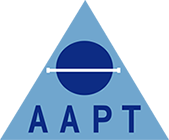News
Tips for a Successful RSciTech Application
Insights from an AAPT Assessor, Lucy Bridle-Thorne RSciTech MAAPT

The AAPT greatly values the contributions of its members, particularly those who volunteer their time to support key initiatives—such as assessing applications for the Registered Science Technician (RSciTech) shortened route.
AAPT Secretary, Christian Burt, spoke with Lucy Bridle-Thorne RSciTech MAAPT, a trained Science Council application assessor, to gain insights into her role and gather essential advice for submitting a strong RSciTech application.
Christian: What makes compelling evidence for the technical competencies?
Lucy: The best evidence comes from real-world examples of your work as an Anatomical Pathology Technologist (APT). Assessors want to see:
-
Problem-solving in action (e.g., troubleshooting challenging cases in the PM room).
-
Practical decision-making (e.g., choosing the most effective method and reflecting on why).
-
Impactful changes (e.g., cost-saving measures, improved patient record-keeping after an AAPT event).
-
Applied learning (e.g., implementing techniques from a reconstruction workshop).
"Tell us about your day-to-day work—how you make decisions, adapt, and improve processes"
How Should Applicants Structure Their Examples?
A strong response directly addresses the standard while keeping the focus on your role. I suggest:
-
Introduce the scenario briefly.
-
Use the standard’s wording to guide your response.
-
Break down key points—explain your choices, alternatives, and reflections.
Example: Standard D2 – Using Resources Effectively
-
Method/equipment choice: Why did you select a specific needle gauge or stitching technique?
-
Planning & organisation: How did you prepare? Did you consult colleagues?
-
Review & reflection: What worked? What didn’t? How did you adjust?
"Keep the standard in mind—this ensures your response is focused and thorough"
Common Mistakes & How to Avoid Them
-
Third-person writing: Use "I" to highlight your contributions.
-
Overloading examples: Stick to one strong case per standard rather than multiple weaker ones.
-
Lacking reflection: Show what you learned, even if something didn’t go as planned.
What Makes a Strong Application Stand Out?
-
First-person narrative (clearly demonstrating your role).
-
Varied examples (showing different skills and scenarios).
-
Honest reflection (discussing challenges and improvements).
"The best applications show not just what you do, but why and how you do it"
The Importance of CPD
Your Continuing Professional Development (CPD) statement should go beyond listing courses. Assessors want to see:
-
What you learned and how you applied it.
-
How you’ve grown in your role.
-
Future development goals.
"It’s not about attendance—it’s about what you do with your knowledge"
Feedback & Reapplication
If your application is unsuccessful, you’ll receive constructive feedback on how to improve. You can reapply once you’ve refined your responses—take your time to ensure your next submission is stronger.
Addressing Competency Gaps
If you identify gaps, consider:
-
Training & workshops (AAPT events are a great resource).
-
Peer discussions (learning from other APTs).
-
Appraisals (working with your manager on development plans).
Final Tip
"Step away from your application for a few days, then review it with fresh eyes—it makes a difference!"
For more guidance on the RSciTech shortened route application process, visit the AAPT website or reach out to members for advice.
